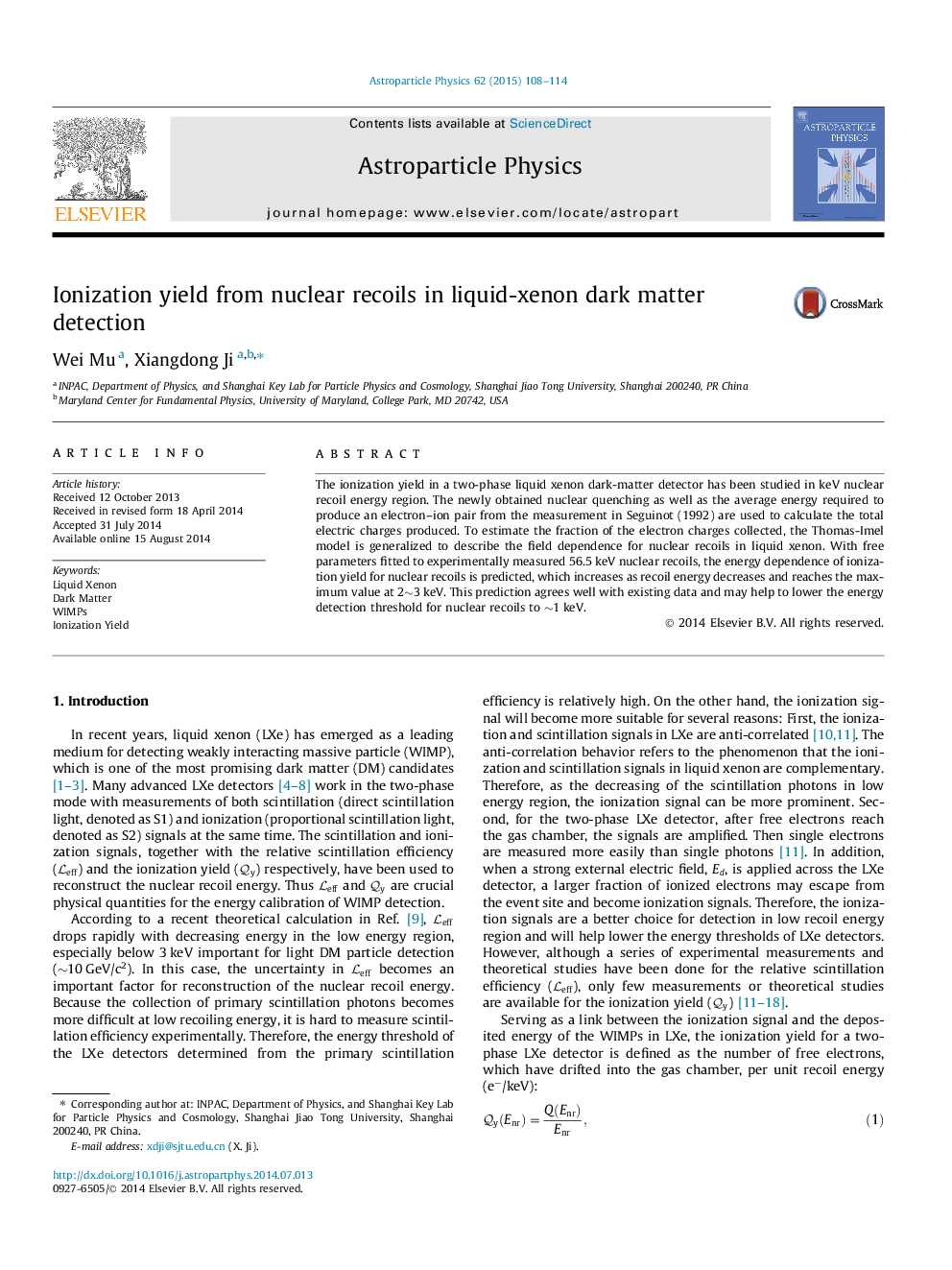| Article ID | Journal | Published Year | Pages | File Type |
|---|---|---|---|---|
| 8132911 | Astroparticle Physics | 2015 | 7 Pages |
Abstract
The ionization yield in a two-phase liquid xenon dark-matter detector has been studied in keV nuclear recoil energy region. The newly obtained nuclear quenching as well as the average energy required to produce an electron-ion pair from the measurement in Seguinot (1992) are used to calculate the total electric charges produced. To estimate the fraction of the electron charges collected, the Thomas-Imel model is generalized to describe the field dependence for nuclear recoils in liquid xenon. With free parameters fitted to experimentally measured 56.5Â keV nuclear recoils, the energy dependence of ionization yield for nuclear recoils is predicted, which increases as recoil energy decreases and reaches the maximum value at 2â¼3Â keV. This prediction agrees well with existing data and may help to lower the energy detection threshold for nuclear recoils to â¼1Â keV.
Related Topics
Physical Sciences and Engineering
Physics and Astronomy
Astronomy and Astrophysics
Authors
Wei Mu, Xiangdong Ji,
